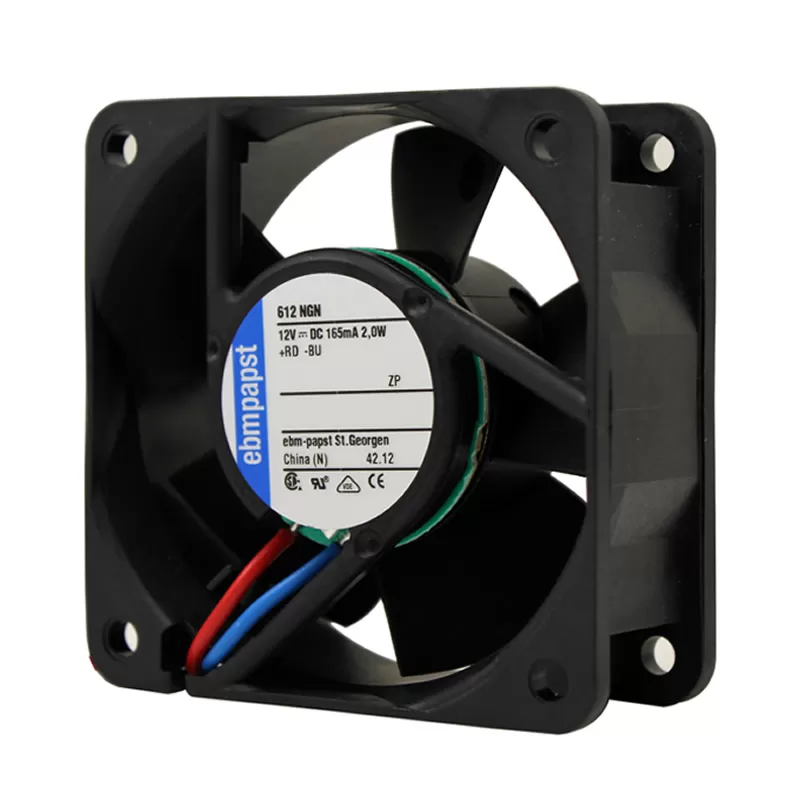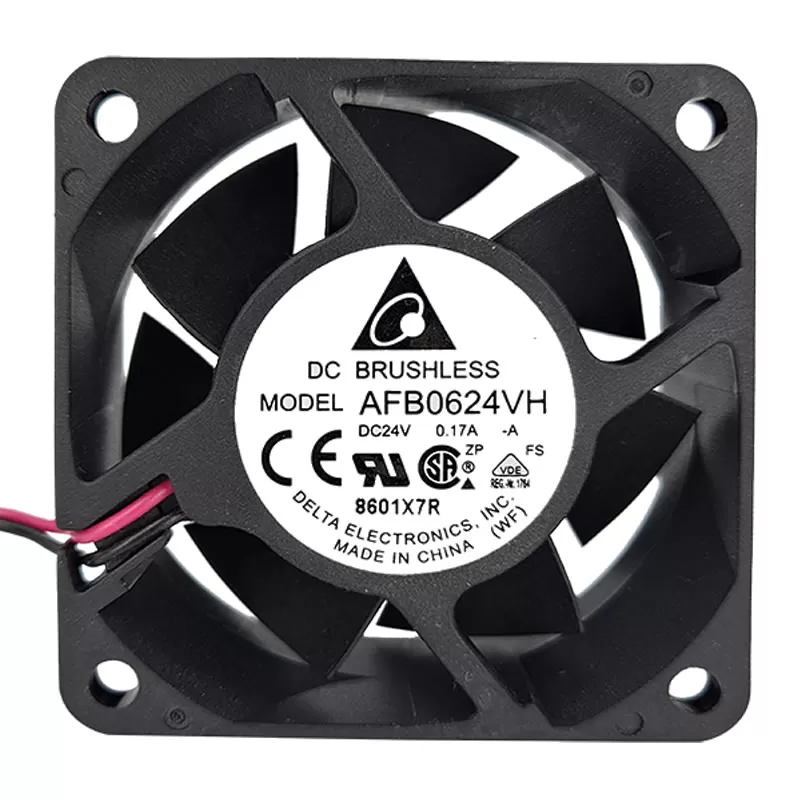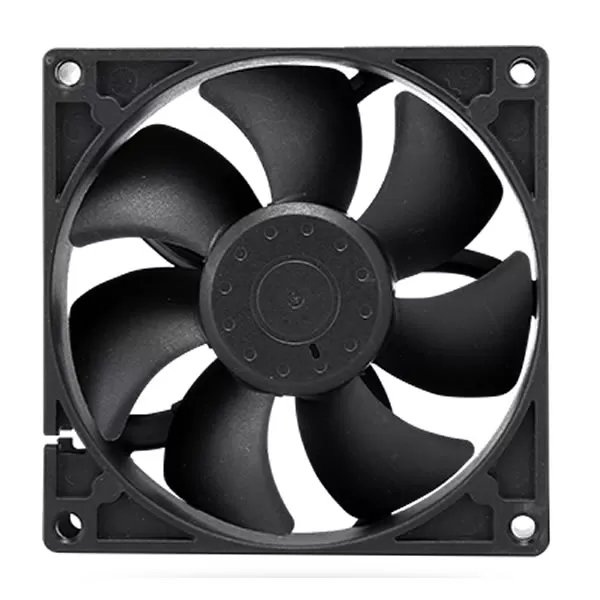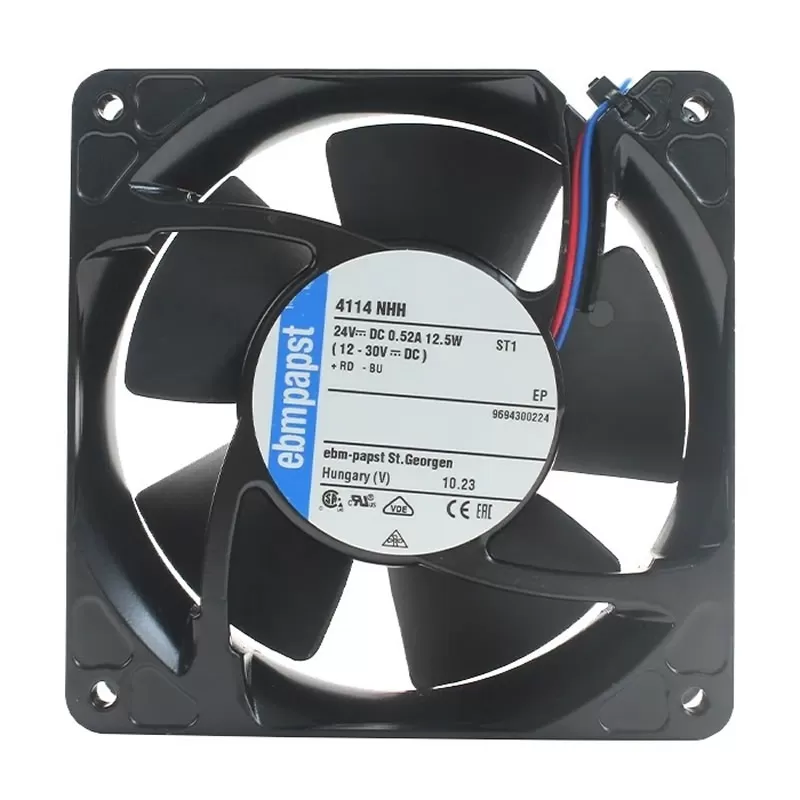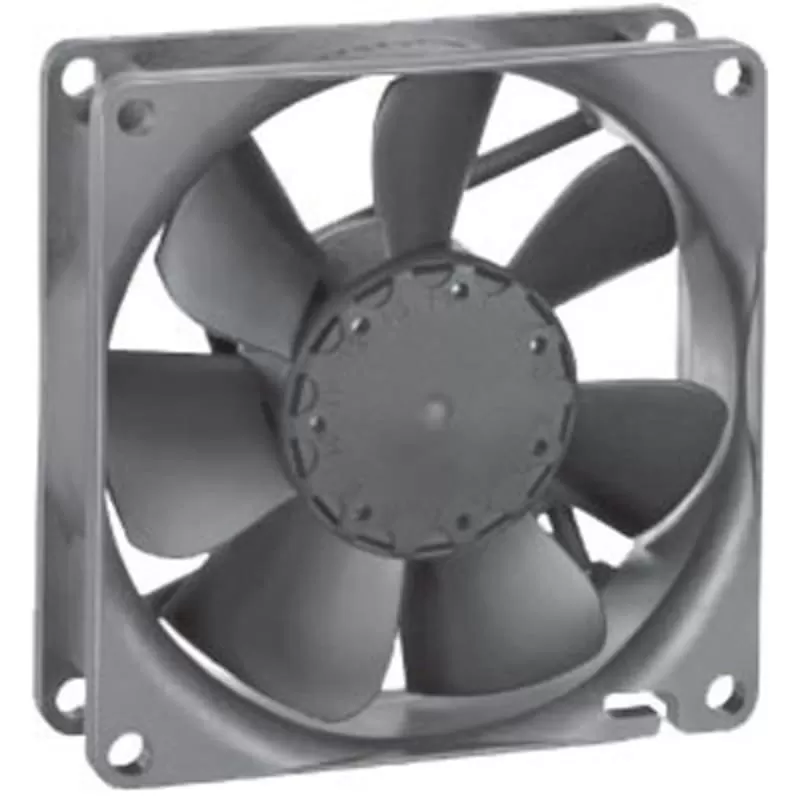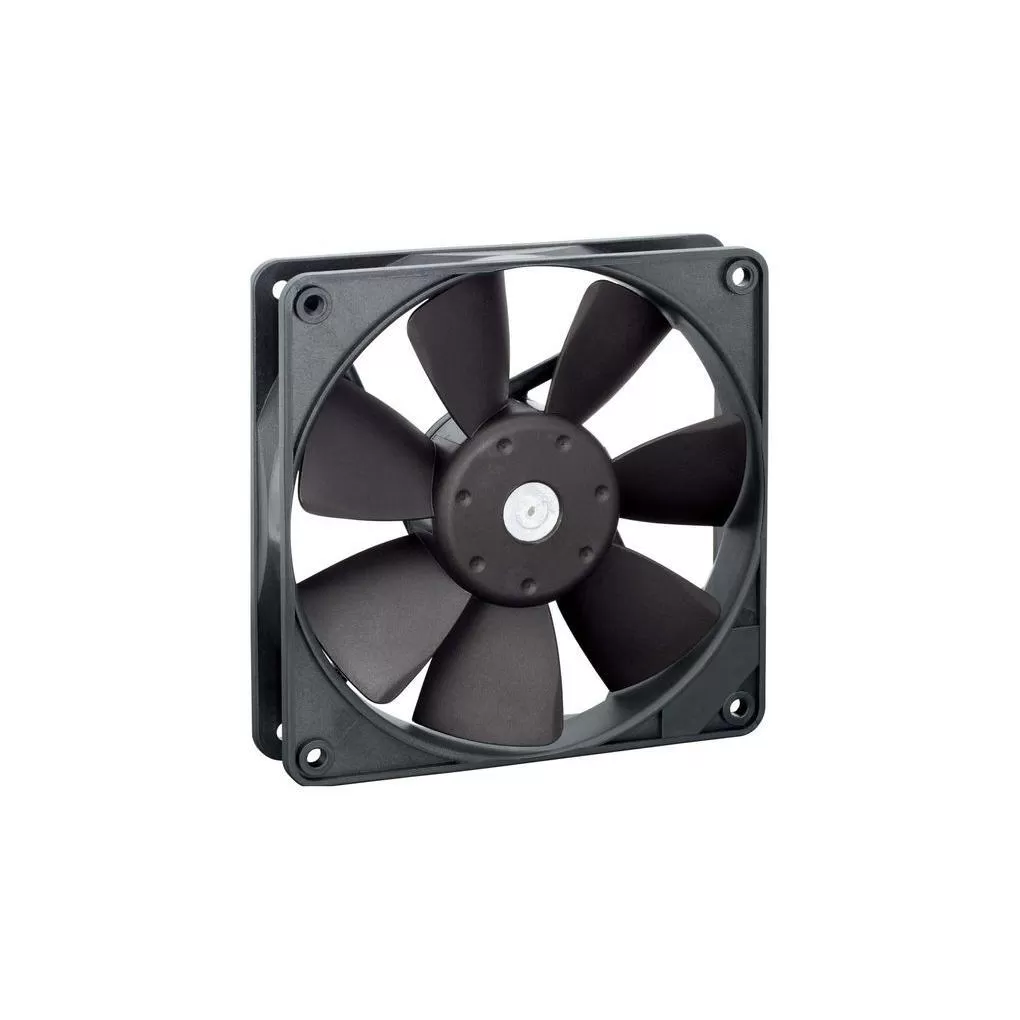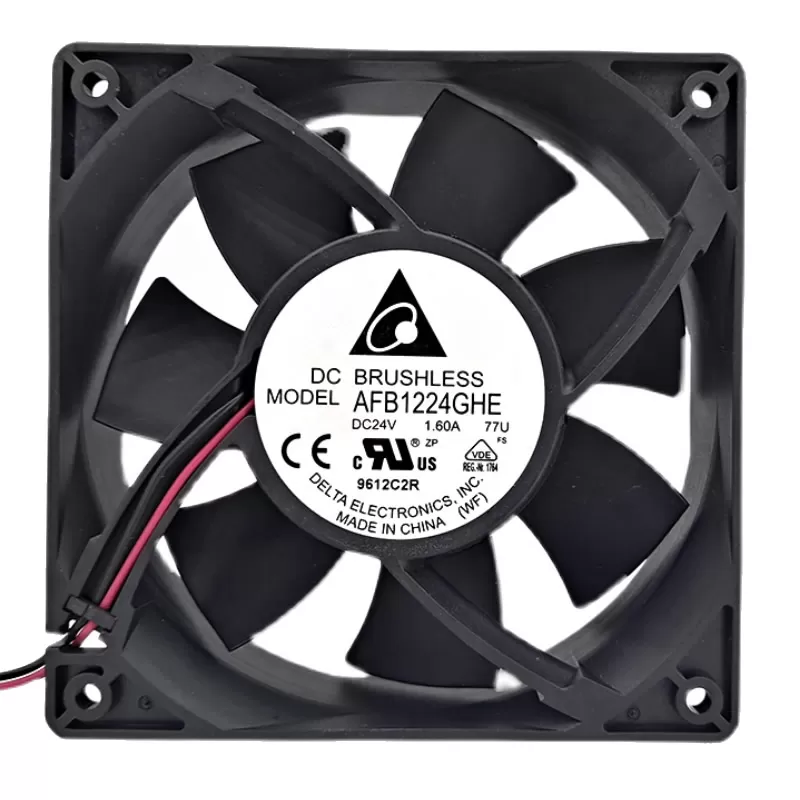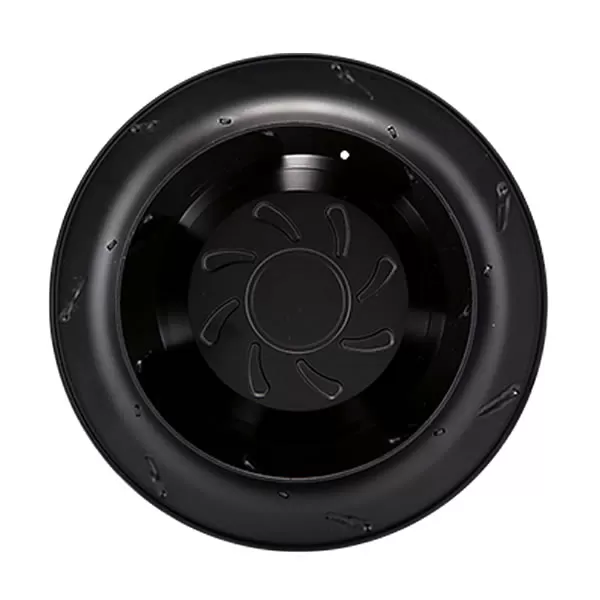In an era defined by rapid technological progress, efficient heat management has become a critical factor for ensuring the reliability of electronic devices, industrial machinery, and modern transportation systems. DC fans, renowned for their energy efficiency, precise control, and adaptability, have emerged as a fundamental component in thermal management solutions. This article delves into their core technical principles and explores the groundbreaking innovations driving their evolution.
I. Core Technical Architecture
1. Motor Systems: Brushed vs. Brushless Dynamics
DC fans are primarily powered by two types of motors:
- Brushed Motors: Traditional in design, these motors use carbon brushes for commutation. While they offer simplicity and cost – effectiveness, they suffer from a limited lifespan (ranging from 10,000 to 30,000 hours), high noise levels, and significant electromagnetic interference. As a result, they are increasingly being phased out in advanced applications.
- Brushless DC Motors (BLDC): The industry standard for modern fans, BLDC motors rely on electronic commutation through Hall sensors or sensorless vector control. Their key advantages include:
- Longevity: With zero mechanical contact, they can operate for 50,000 to 100,000 hours;
- Efficiency: Achieving over 80% energy conversion, which is 20 – 30% higher than brushed motors;
- Clean Operation: Minimizing electromagnetic interference, making them essential for sensitive electronics such as medical devices and servers.
2. Speed Control Technologies
- PWM (Pulse Width Modulation): Widely regarded as the optimal solution for precision control, PWM enables speed adjustment from 0 to 100% with an accuracy of 1% by modulating the duty cycle. Four – wire fans equipped with PWM signals also provide tachometric feedback for real – time RPM monitoring, which is crucial in CPU cooling and industrial automation.
- Voltage Regulation: A more straightforward alternative, voltage regulation adjusts the input voltage (e.g., between 5V and 12V). However, it is prone to torque loss at low speeds and “startup dead zones,” thus limiting its application in high – precision scenarios.
3. Aerodynamic Engineering
The performance of a DC fan largely depends on its blade and housing design:
- Blade Geometry: Optimized through Computational Fluid Dynamics (CFD) simulations, blade angles between 18° and 30° strike an ideal balance between pressure and airflow. Innovative designs, such as Noctua’s scalloped blades, reduce turbulence, allowing the NF – A12 model to achieve a static pressure of 1.85mm H₂O and an airflow of 54.5CFM.
- Flow Dynamics: Intake grilles with a spacing of ≤2mm and airflow directors enhance efficiency by 3 – 5%. This is particularly important in compact environments like laptop heatsinks or server racks.
II. Material and Design Innovations
1. Advanced Bearings for Durability
- Magnetic Levitation Bearings: These bearings use electromagnetic fields to suspend the rotor, eliminating friction entirely. This results in ultra – quiet operation (as low as 15dB(A)) and an exceptionally long lifespan of over 200,000 hours. They are commonly used in premium server fans, such as the Delta FFB0624EHE.
- Ceramic Bearings: Utilizing silicon nitride (Si₃N₄) balls, which are 2.3 times harder than steel, ceramic bearings can withstand temperatures of up to 120°C. They are the ideal choice for applications like automotive engine cooling and industrial ovens.
2. Lightweight, Resilient Blade Materials
- Carbon Fiber Composites: 75% lighter than aluminum yet three times stronger, carbon fiber composites are used in fans for drones and aerospace applications, where a high power – to – weight ratio is essential.
- Nano – Textured Coatings: Surfaces treated with superhydrophobic nano – coatings (with a contact angle >150°) repel dust and oils, extending maintenance intervals by 50% in dusty environments, such as those encountered in mining equipment.
3. Acoustic Optimization
- Turbulence Mitigation: Serrated leading edges on fan blades, inspired by owl wings, reduce vortex noise by 6dB(A). Additionally, silicone anti – vibration mounts isolate frame resonance, shifting resonant frequencies outside the range of human auditory sensitivity (200 – 500Hz).
III. Smart Control and Efficiency Breakthroughs
1. Intelligent Thermal Management
- AI – Driven Algorithms: Machine learning models, such as Long Short – Term Memory (LSTM) networks used in data centers, can predict heat patterns. This enables proactive adjustment of fan speeds, reducing response time by 40% and energy consumption by 25%.
- IoT Integration: Networked fans supporting protocols like Modbus or CAN enable remote monitoring of RPM and fault alerts, as well as cluster optimization. For example, Huawei’s data center systems achieve a 30% increase in cooling efficiency through cloud – based control of fan matrices.
2. Energy Harvesting & Efficiency
- Regenerative Technology: This technology converts rotational inertia into electrical energy during fan shutdown or high – speed operation, with an energy recovery efficiency of 15 – 20%. The harvested energy can power onboard sensors.
- Certified Efficiency: ENERGY STAR – compliant fans consume 40% less power compared to standard models. Top – tier designs, like Delta’s EC series, achieve an impressive 333CFM/W, making them suitable for off – grid solar systems.
3. Adaptive Operation
Zero – RPM stop – start functionality, commonly found in laptops, eliminates idle losses. The fan only activates when temperatures exceed predefined thresholds, striking a balance between silence and performance.
IV. Application – Specific Innovations
1. Data Center Resilience
- HVDC Compatibility: 48V/125V fans minimize conversion losses in high – density server farms. When paired with N + 1 redundancy arrays, they ensure an uptime of 99.99%, even in the event of fan failures.
2. Automotive Ruggedization
- Extreme Environment Design: DC fans with IP67 ratings and the ability to operate in temperatures ranging from – 40°C to 85°C are integrated into EV battery cooling systems. They work in conjunction with liquid cooling loops to maintain a thermal uniformity of ±2°C.
3. Consumer Electronics Miniaturization
- Ultra – Thin Form Factors: Thanks to optimized stator windings, fans as thin as 5mm (e.g., those used in MacBook Air cooling modules) can deliver 30CFM of airflow in profiles less than 10mm thick.
- Wireless Integration: Battery – powered fans with Qi – charging capabilities offer enhanced portability, providing over 8 hours of runtime for outdoor and mobile applications.
V. Future Directions
- Mechatronic Integration: Monolithic motor – blade designs created through injection molding will improve balance precision (to less than 5mg·cm imbalance) and reduce assembly errors.
- Predictive Maintenance: Combinations of vibration sensors and AI algorithms will be able to detect bearing wear more than 300 hours in advance, enabling proactive replacement in mission – critical setups.
- Sustainable Manufacturing: The adoption of lead – free soldering, recycled PC materials, and a 30% reduction in carbon footprints will ensure compliance with regulations like EU RoHS 3.0 and global ESG goals.
DC fans have transformed from simple cooling components into intelligent thermal management solutions, driving efficiency across a wide range of applications, from smartphones to supercomputers. As technologies such as 5G, AI, and electric mobility continue to demand higher performance, the integration of advanced materials, smart controls, and sustainable design in DC fans will solidify their status as indispensable enablers of modern technology.

